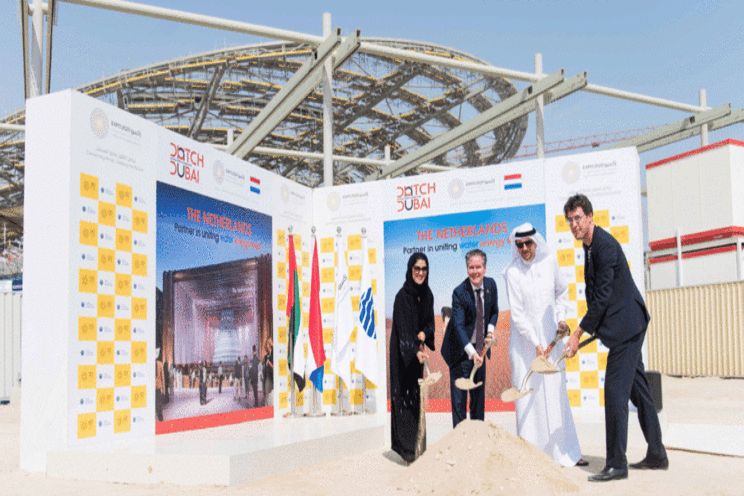The nexus approach to sustainability
Added on 02 October 2020

Gulf countries face complex challenges when it comes to meeting the growing demand in these three vital areas. The region is nevertheless striving for a more sustainable future and is working towards the UN Sustainable Development Goals, which aim to address global issues including food waste, water scarcity, sustainability and access to affordable clean energy. Ultimately, the goal is to become self-sufficient.
UAE progress
In the UAE, the long-term need to secure food, water and energy supplies is well understood. In addition to setting federal targets to improve WEF security, the UAE is partnering with countries that have expertise that could help to tackle the challenges it faces.
In the Netherlands, investment in food production has already transformed the country into the second-largest global exporter of agricultural goods in terms of dollar value after the US. The country also ranked fourth in the Global Innovation Index 2019, while the UAE ranked 36th.
Expo 2020, therefore, presents an opportunity for the two countries to collaborate on developing and implementing innovative sustainability solutions. This would build on the memorandum of understanding that the UAE and the Netherlands signed in 2017, which aimed to encourage greater dialogue, awareness and engagement.
"The Netherlands has a lot to offer when it comes to innovative solutions in water and energy technologies for agriculture," says Hans Sandee, commissioner general for Expo 2020 and consul general of the Netherlands to Dubai.
The Netherlands pavilion, located in the Sustainability district at the expo site, will focus on the intersecting theme of "uniting water, energy and food".
Dutch pavilion
The pavilion will be "a biotope where we unite water, energy and food through innovations and show the interconnectedness of these three elements", says Michiel Raaphorst, founding partner at V8 Architects, the firm behind the design of the structure.
"The pavilion is designed as a sustainable biotope - a harvesting machine. Water will be harvested from the air. Energy is collected from the sun, and plants and oyster mushrooms will grow on the structure's 'food cone'."
The team at V8 Architects says the pavilion will be designed and constructed to showcase "sustainability and circularity". Therefore, all materials will be reusable, recyclable or bio-degradable, keeping the pavilion's footprint as small as possible.
V8 Architects will also focus on using local building materials. The firm plans to rent materials where they can, and return them after the expo.
Sourcing locally has resulted in steel sheet piles and construction tubes, materials that are normally underground, being used as the walls of the pavilion, Raaphorst says.
This approach, he adds, emphasises the "circularity" of the construction material while at the same time showcasing the civil engineering expertise of the Netherlands.
"Incorporating the 'living' aspect of a biotope into a built environment seems challenging, but it is in fact about following the logics of nature," says Raaphorst.
"As designers, we need to understand the optimal conditions under which different types of vegetation flourish, including humidity, temperature, carbon dioxide levels, daylight and soil quality.
"As with controlling the climate within a building's interior, these conditions can be created by using machines, but we chose to use natural power to the maximum. Natural phenomena like condensation, photosynthesis and temperature differences lead to different conditions for different types of plants."
Dutch innovations will be incorporated into the design of the pavilion. These include bio-based materials; a curtain made from biopolymers; floor and wall tiles incorporating mycelium, the thread-like structures of fungi; specially designed solar panels that generate energy while allowing sunlight to feed the plants on the 'food cone'; and a solar-powered device called Rainmaker that will produce water from desert air.
The shell-and-core steel structure of the pavilion is due to be finished in the late summer of 2020. Construction of the remaining structure will then be put on hold and is expected to resume in early 2021.

The Dutch expo pavilion is designed as a sustainable biotope - a harvesting machine
The Netherlands is particularly keen to work with the UAE on building a local ecosystem for agriculture.
The key to addressing the UAE's food security challenges lies in educating a new generation of local farmers on the use of agriculture technology and artificial intelligence to produce food efficiently with the smallest ecological footprint possible, says Sandee.
"We believe that the challenges of today, both regional and worldwide, demand closer collaboration between nations to develop sustainable solutions.
"Just as food cannot exist without water and energy, innovative solutions cannot exist without building meaningful connections and sharing knowledge."

V8 Architects will focus on using local building materials
Source and Photo Courtesy of Middle East Business Intelligence
More news















